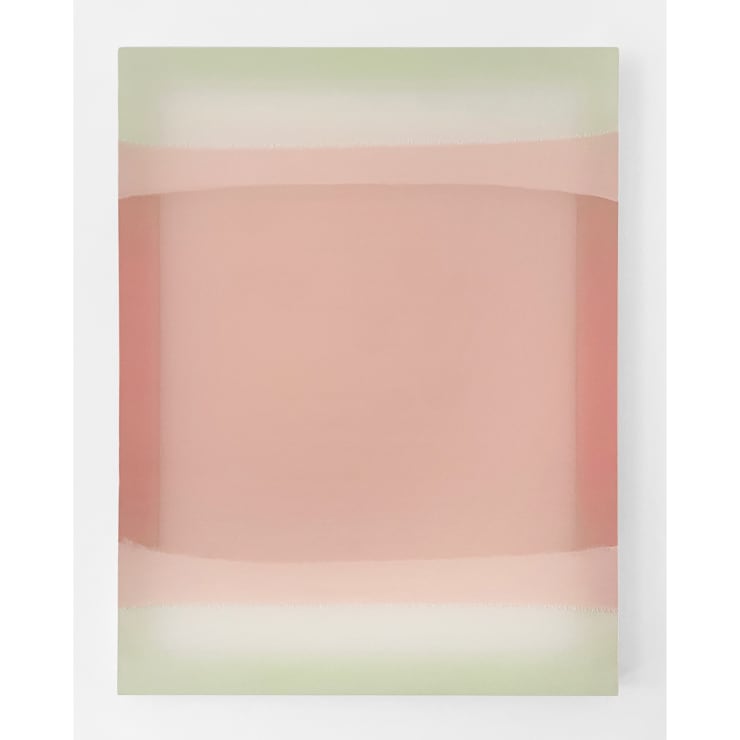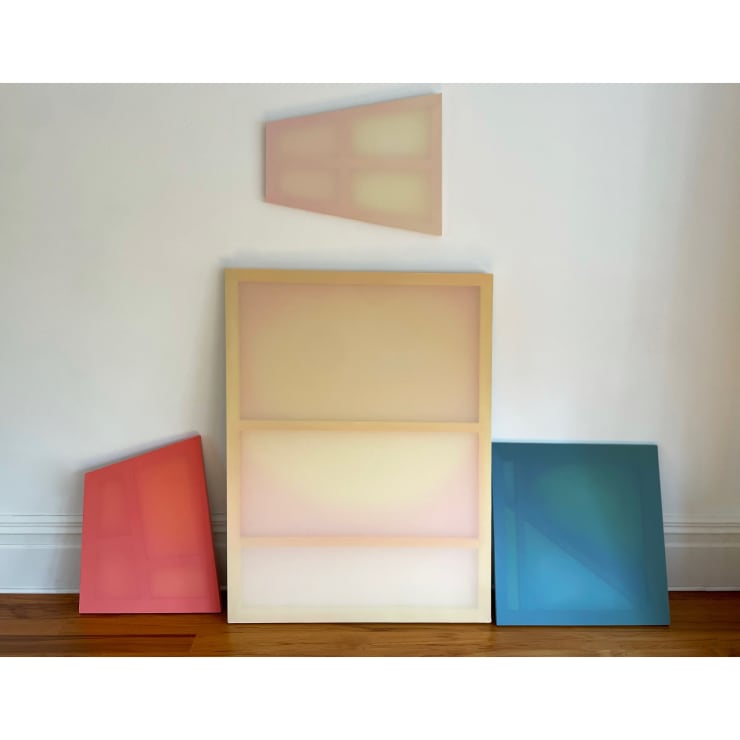We are delighted to introduce New Zealand-based artist Polly Gilroy. Gilroy’s constructions encourage her audience to question the boundaries of traditional painting. Embracing the point of transition between sculpture and painting, she binds the two through multi-faceted structures. Gilroy responds to the complexities of colour through nuanced hues which are further enhanced by her skilful manipulation of translucence and light. Demarcating space, her works often bring the support structures into the composition, stripping the formal elements of the painting down to its very core.
OTOMYS: What are the ideas that inform your current work?
Polly Gilroy: My recent works have evolved from an investigation into colour theory. Previously I was focused on the purity of tone, examining the subtle effects of light and layering on a single colour. Keen to create new experiences, I began looking at formative art movements from the 1960s and 70s. In particular, I was fascinated by the Support/Surfaces movement that emerged from the South of France during this period. The members this movement stripped the idea of the painting down to its most formal elements, reimagining the place of art within society. For these artists, the canvas and stretcher bars were the central focus of the artwork. Inspired by their radical reimagining of not only painting but minimalism itself, I began reconsidering the role of paint within a painting. By nailing semi-transparent sheets of silk onto my frames, I found a means to veto paint whilst maintaining the illusionary power of colour and tone.
OTOMYS: It is hard to believe that the subtle tonal gradations and diffused edges within your work are achieved with fabric. Can you elaborate on your use of silk?
Polly Gilroy: My work often employs more than one material. The front of the work may be silk, but the back will be an opaque backing that I have painted a particular colour. By layering different materials and colours I am able to create a completely new colour. For example, the front of an artwork may be white silk, but the back is a bright orange. As a result, the colour created by this combination will be a soft and pastel tangerine, as the two materials work together to create a whole new visual experience. By layering these materials I am able to mix colour as a painter would blend pigment and oil. There is a fragility and delicacy to silk that I am attracted to. It’s natural transparency and the way it interacts with light is beguiling.
OTOMYS: Why were you inspired to challenge the boundaries of traditional painting?
Polly Gilroy: Really, it was during a University trip to New York where I first realised the limitless potential of minimalism. At Uni I was doing a lot of abstract painting, and was not particularly focused on materiality. However, when I was confronted with the work of Rothko and Tuttle in the flesh, I was left breathless. The emotional intensity that these artists achieved with such reductive and minimal elements was sensational. It inspired me to push the boundaries of art myself. What Rothko did with paint, I wanted to achieve by layering materials, taking the materiality of the painting to a new level.
OTOMYS: By working with such minimal means, colour inevitably becomes the central narrative of your work. What is the conceptual significance of colour within your practice?
Polly Gilroy: My early works responded to architecture and the colour and light that could be experienced from behind a window. Having deviated from this theme for the last few years I was keen to re-examine these ideas within my most recent body of work. By ramping up the contrast and saturation within my works I have been exploring new territory and new experiences.
When creating my colour compositions I am driven by both an emotional intuition and formal understanding of colour theory. Some of colours greatest compositions can be found within nature; sunsets, horizons, landscapes and window views hold such visual magic. The very task of attempting to understand colour has been a source of inspiration too. Josef Albers’ investigations into colour theory have been a pivotal part of my practice. He once famously said “in order to use colour effectively it is necessary to look at it continually,” which reinforces the idea that the greatest combinations are found within life and nature. I am interested in exploring how colours change under different conditions, and the role of the atmosphere and light in influencing the viewer’s perception of colour.
To enquire about Polly Gilroy's work please contact info@otomys.com.
September 13, 2023


